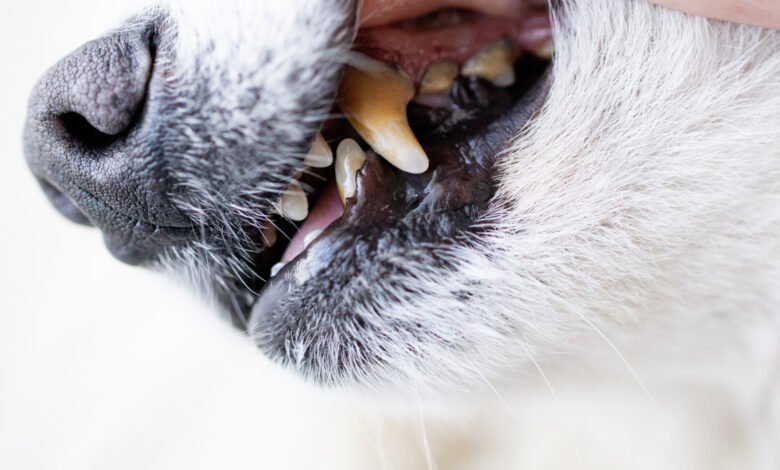
Having a dog’s tooth extracted, or pulled, by your veterinarian is a routine procedure in many practices. Sometimes, a senior dog tooth that’s just sort of hanging can be wiggled loose and pulled out by the veterinarian, but that’s the rare case. Tooth extraction generally involves surgery and anesthesia.
Other than the incisors – the small teeth in front of the mouth – dog teeth have deep and/or multiple roots. That means complications are more likely if one of those teeth needs to be extracted. Sutures may be required to aid in gum healing. Antibiotics may be necessary to prevent infection. Your veterinarian may need to pack the hole left behind to stanch bleeding and prevent pain from air on nerve roots. Sadly, it is even possible that your dog may have injuries to the jaw itself secondary to the tooth removal procedure.
As unpleasant as all that may sound, dog owners often tell their veterinarians that their dogs appear to have more energy after dental procedures. This is most likely because the dogs were just dealing with and covering up a great deal of oral pain. Untreated dental disease can affect all your dog’s organs.
Signs of Extraction Complications
Symptoms of tooth extraction complications can include a hesitation to eat after the normal recovery time, oral pain, obvious gum damage, and/or nasal discharge from an oronasal fistula, which is an opening between the nasal and oral cavities.
Fractured root tips that get missed and left behind can contribute to a risk of infection, are often painful, and may lead to dehiscence (reopening) of the surgery site. Accidental fractures of jaw bones can be painful and cause your dog’s normal dental occlusion to be off.
Senior Dog Dental Extractions
Senior dogs are most likely to need dental extractions, and their recovery time involves getting back to normal after anesthesia as well as healing their extraction sites.
These dogs may need to eat room-temperature food slurries for a week or more. They also need careful pain management, keeping them comfortable while working around any chronic health problems the dogs may have.
Once healed, most senior dogs can go back to their normal diet, even eating kibble despite the removal of many teeth.
Although people cast doubt on its effectiveness, if you routinely brush your dog’s teeth with a pet enzymatic tooth paste, you can lower the risk of dental disease.




